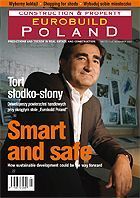Sustainable development is the new buzzword in real estate circles. But is this merely the flavour of the month, or something much more substantial? Orco Property Group is currently developing 2 major projects in Poland that could claim to be sustainable. ‘Eurobuild Poland’ caught up with the president and CEO of the company, Jean François Ottz Magda Konstanynowicz, ‘Eurobuild Poland’: In Poland there have been many press conferences and articles about sustainable development, and it seems that wherever I turn my head now I hear something about it. How much do you think is real concern about the environment from developers and how much is just marketing, because it happens to be a really fashionable idea at the moment?Jean-François Ott, president and CEO of Orco Property Group: There’s nothing wrong with fashion in itself. If democracy is in fashion it doesn’t make democracy a bad thing. The beauty of fashion is that people may go along with






























































